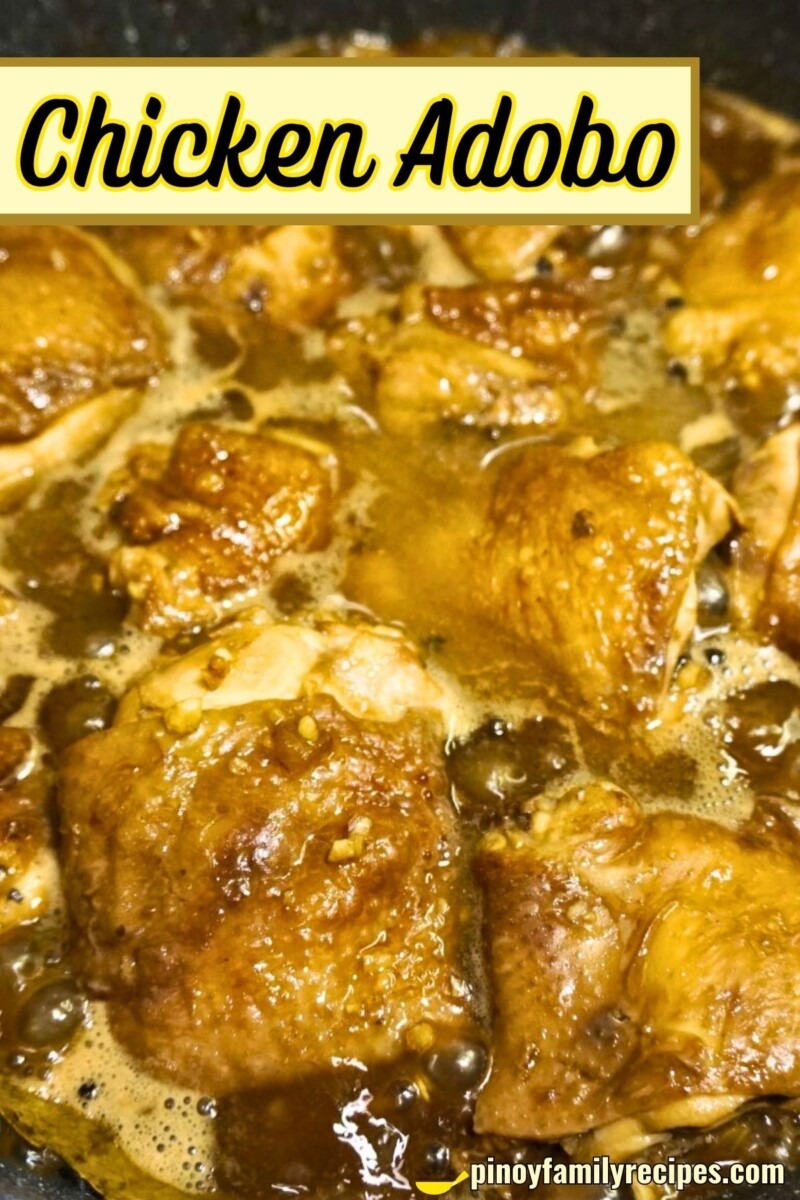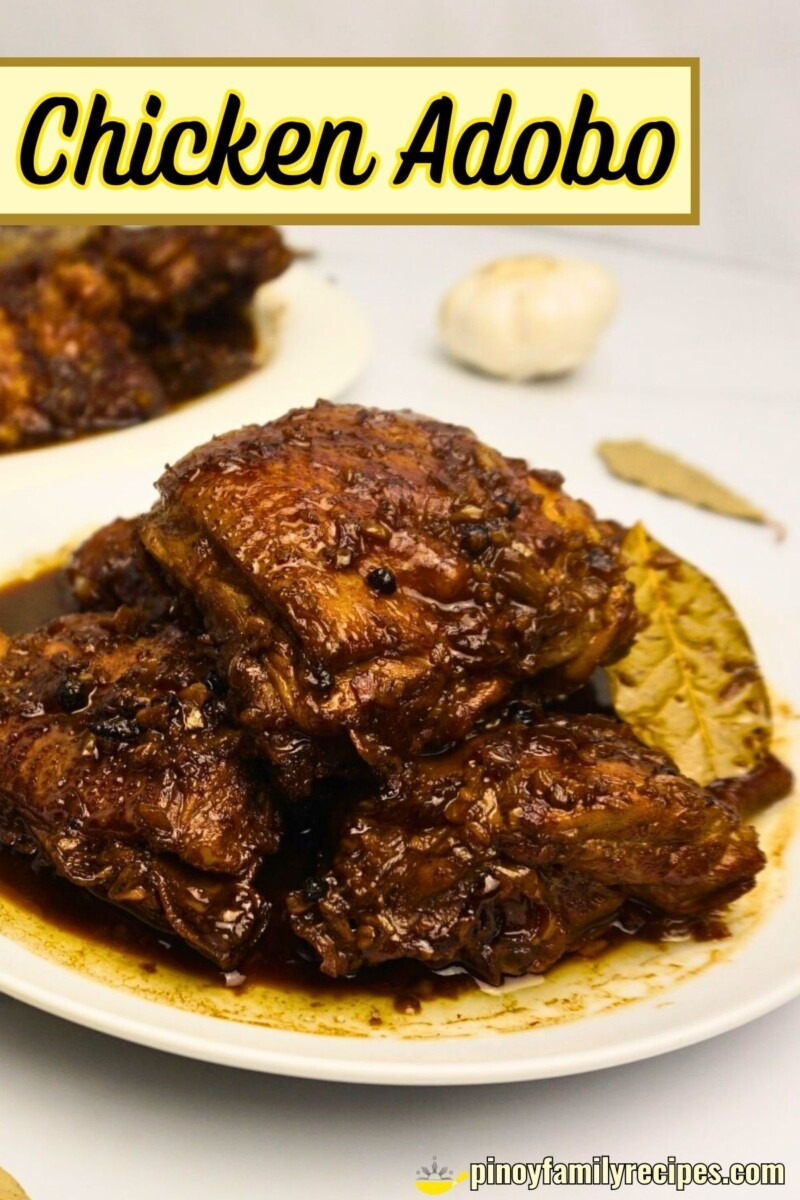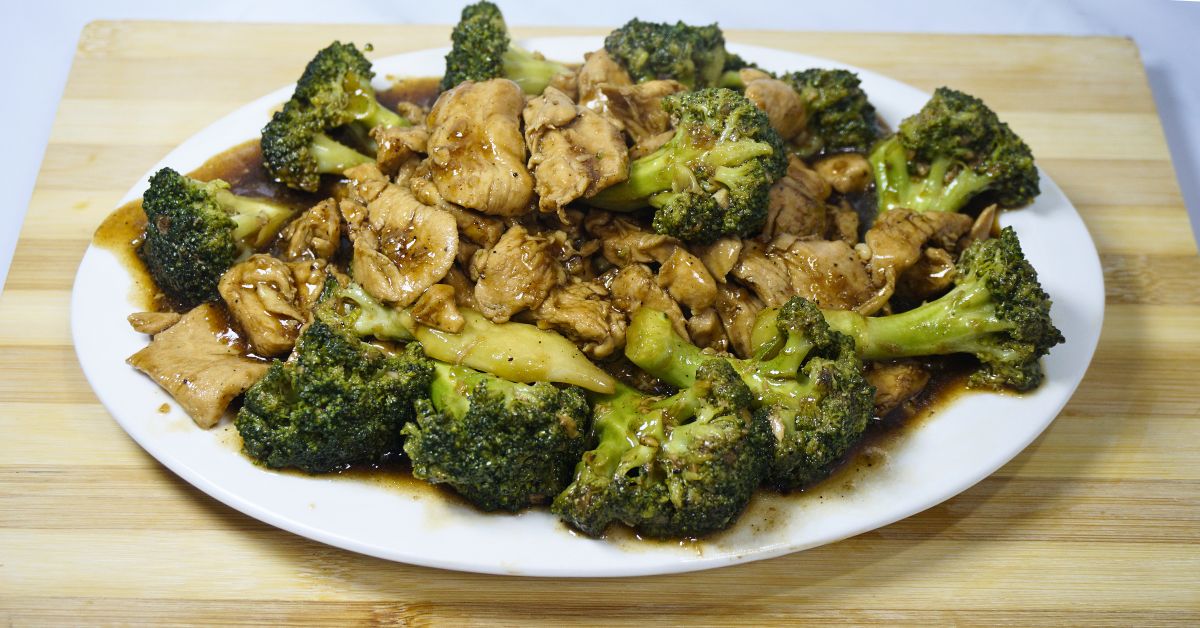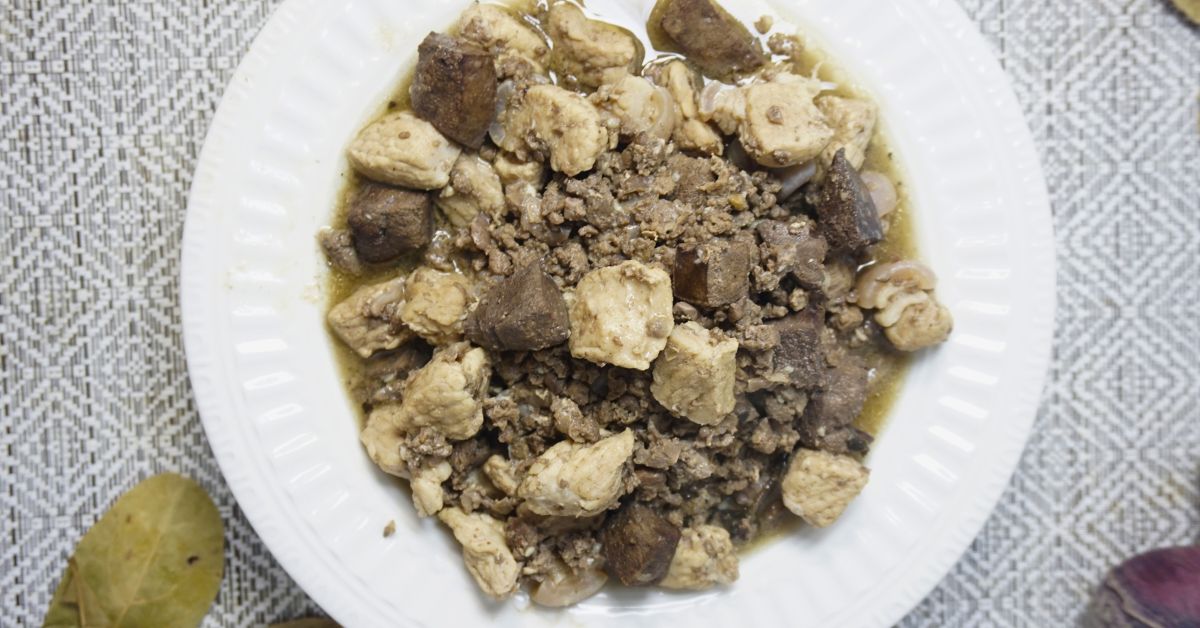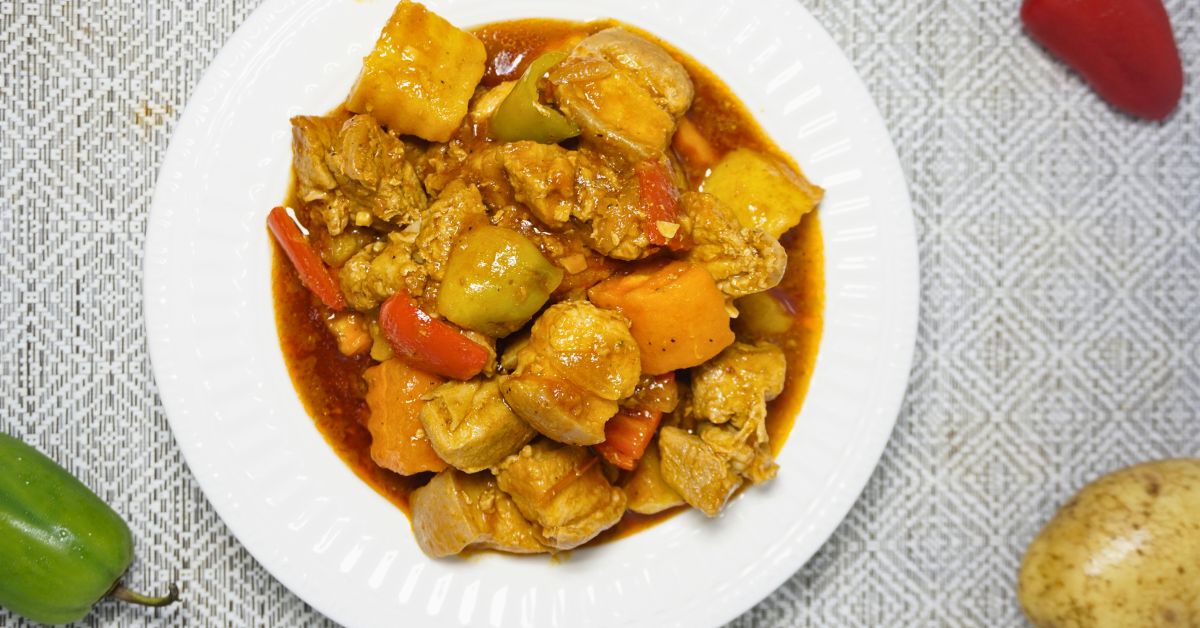
Oh well, what more can I say about chicken adobo? This is definitely our national dish!
Honestly, I never get tired of cooking this. It’s comfort food at its best. The mix of soy sauce, vinegar, garlic, and bay leaves creates a flavor that’s just so rich and satisfying. Plus, it’s super easy to make. Whether you’re a seasoned cook or just starting out, you can’t go wrong with chicken adobo.
Whenever I can’t think of anything to cook for the day, chicken adobo is out of the recipe. Even if you’re not hungry, the smell of it simmering on the stove will make your mouth water.
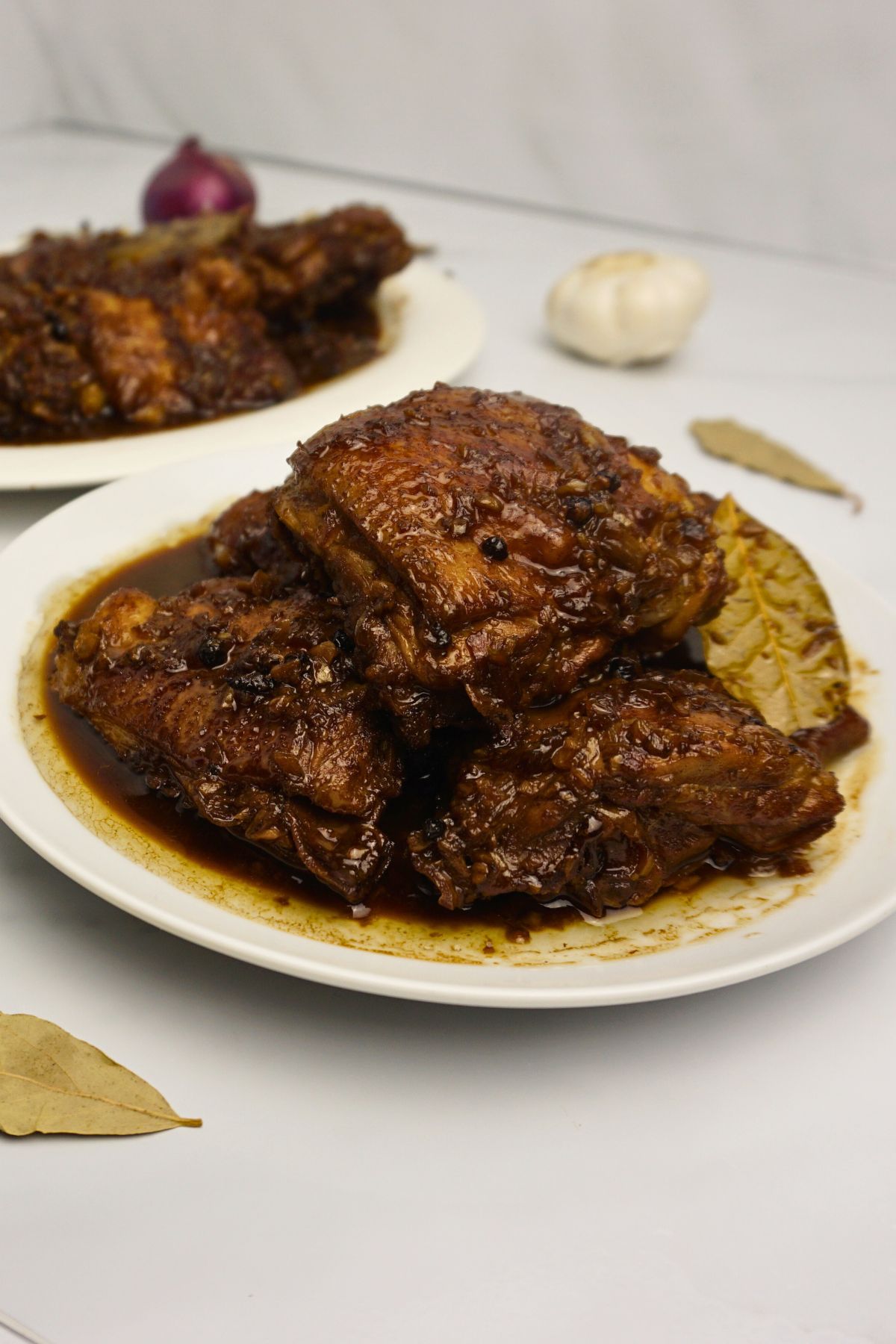
Why is Chicken Adobo Famous?
Lately, I was so shocked at how chicken adobo has become a craze among content creators. It’s everywhere! But honestly, it’s no surprise. Chicken adobo is famous because it’s the perfect combination of simplicity and flavor. The recipe is straightforward, and the ingredients are easy to find, yet the result is always amazing.
This dish represents the heart of Filipino cooking—simple, hearty, and full of flavor. The balance of salty, sour, and savory in adobo is something that just hits the spot every time. Plus, it’s versatile! You can tweak the recipe to your liking, add potatoes, eggs, or even pineapple.
Chicken adobo has become a favorite not just in Filipino homes but also around the world. Its popularity online shows how food can bring people together, share cultures, and create a community of food lovers. So, if you haven’t tried making it yet, now’s the perfect time to join the adobo craze!
Pork vs Chicken Adobo
If you’re going to ask me which is the proud winner between the two, well, I can’t choose! Both pork and chicken adobo have their own unique charms, and it really depends on what you’re in the mood for.
Chicken adobo is lighter and cooks faster. It’s perfect for a quick meal and has a tender, juicy texture that soaks up all the delicious sauce. On the other hand, pork adobo is richer and heartier. The fatty cuts of pork melt in your mouth and give the dish a deeper, more robust flavor.
Some days, I crave the comforting simplicity of chicken adobo, especially when I need something quick and satisfying. Other times, I lean towards pork adobo for its indulgent taste and the way it pairs so well with steamed rice.
In the end, it’s really up to your taste and what you have in your kitchen. Both versions are fantastic and showcase the versatility and deliciousness of adobo. So, why not try both and decide for yourself?
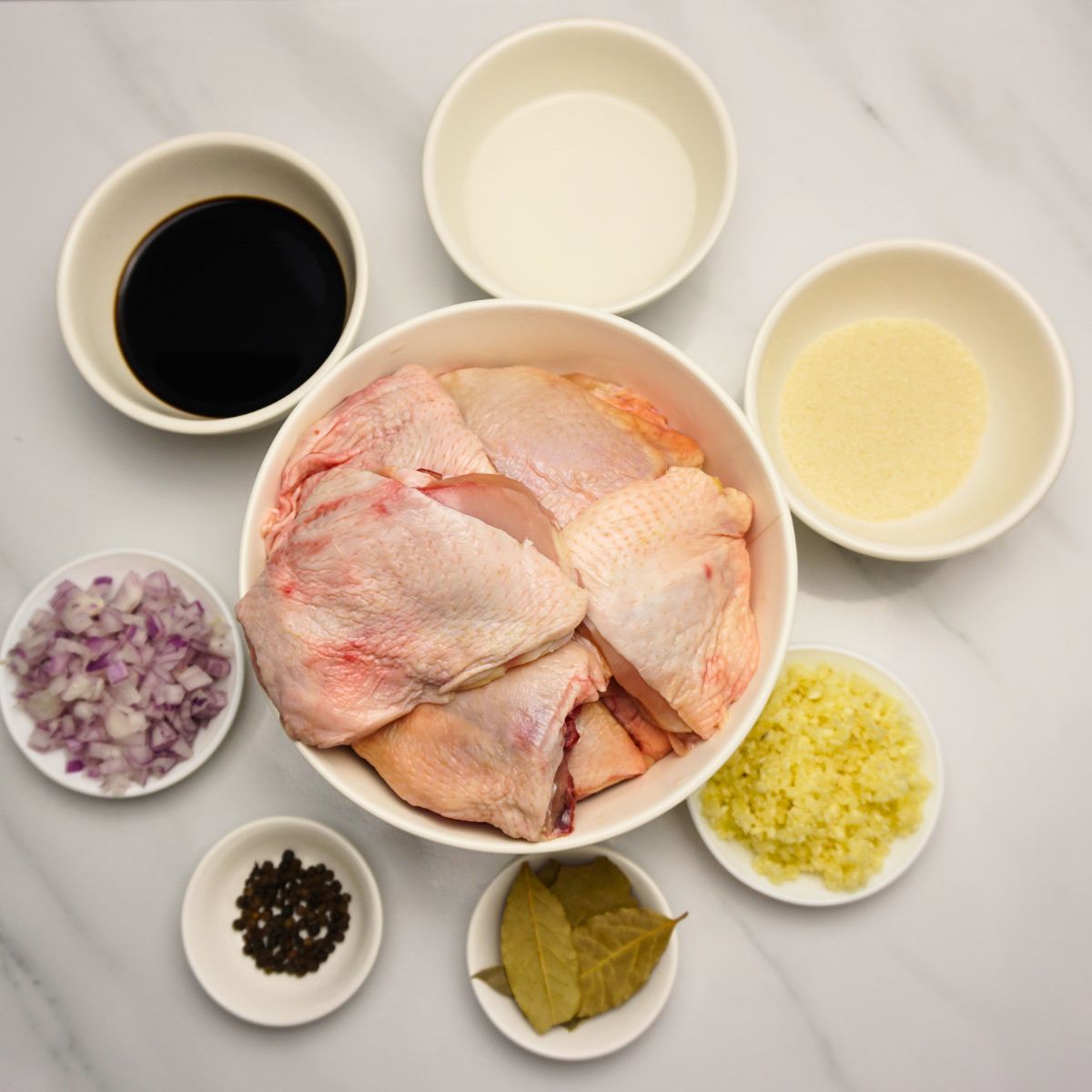
Chicken Adobo Ingredients
- Chicken Thigh
This is non-negotiable to me! Well, you can use other chicken parts if you want bu I highly suggest sticking to using chicken thighs that are tender and juicy, perfect for absorbing the rich flavors of adobo sauce. They provide a hearty base for this classic Filipino dish. - Soy Sauce
Soy sauce adds a deep, savory umami flavor that is essential for adobo. It creates a rich, salty base for the marinade and sauce. - Vinegar
Vinegar gives adobo its signature tangy flavor, balancing the saltiness of the soy sauce. It also helps tenderize the chicken and preserves the dish. - Garlic (Minced)
Minced garlic infuses the adobo with a robust and aromatic flavor. It is a key ingredient that complements the soy sauce and vinegar. - Onion (Diced)
Diced onion adds a subtle sweetness and depth to the dish, blending well with the other ingredients. It helps create a flavorful and aromatic sauce. - Water
Water is used to create the sauce and helps in simmering the chicken until tender. It ensures the flavors meld together perfectly. - Bay Leaves/Laurel
Bay leaves add a subtle, herbal note to the adobo, enhancing its aromatic profile. They are traditionally used to flavor the sauce. - Black Pepper (Whole)
Whole black pepper adds a mild heat and peppery aroma to the dish. It provides a slight kick without overpowering the other flavors. - Sugar (Brown)
Brown sugar adds a touch of sweetness that balances the saltiness and tanginess of the adobo. It also helps to caramelize and deepen the color of the sauce. - Salt to taste
Salt enhances all the flavors in the adobo, ensuring a well-seasoned dish. It can be adjusted to your personal preference.
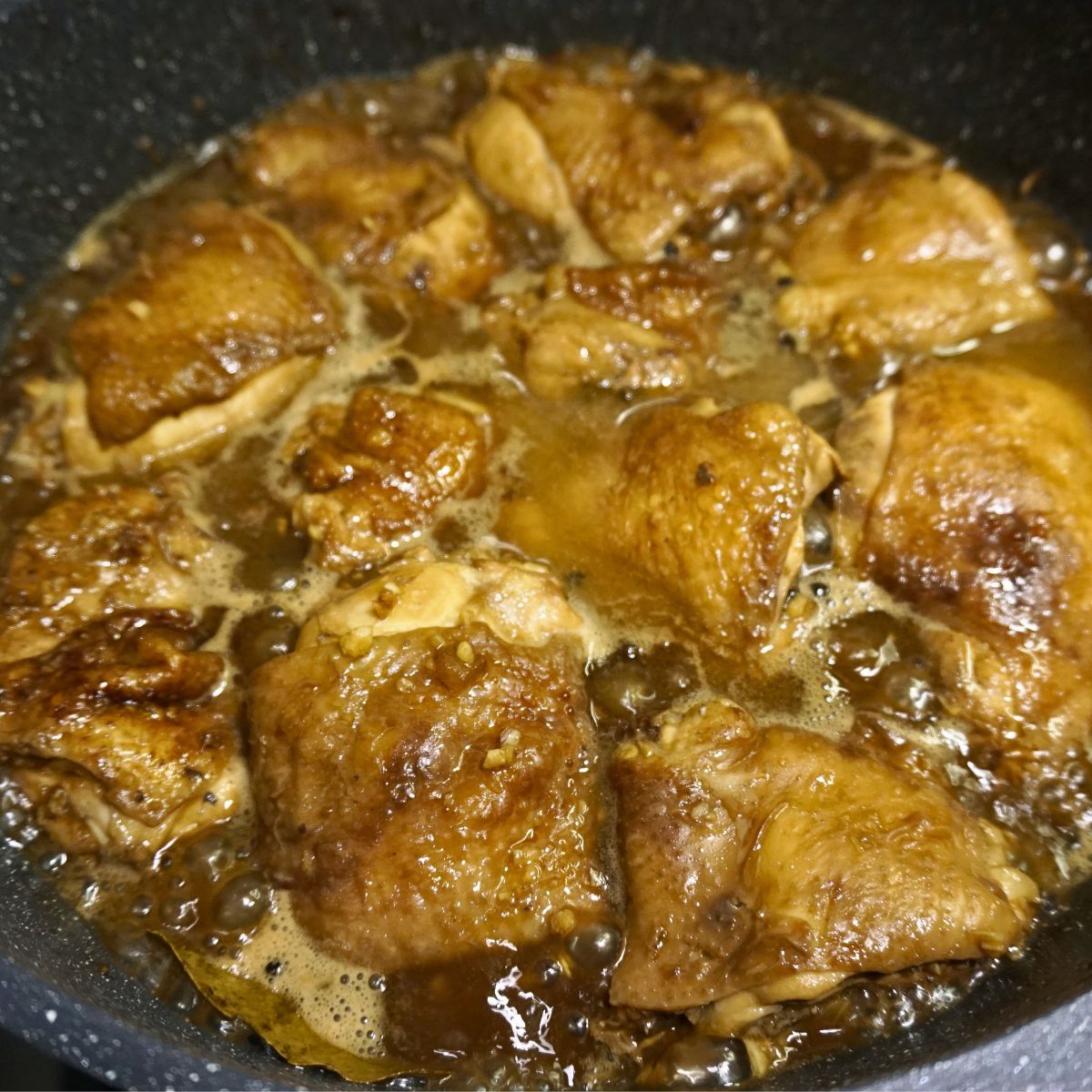
How To Cook Chicken Adobo
Marinate the Chicken
First, in a mixing bowl, combine eight tablespoons of soy sauce, eight tablespoons of vinegar, and a tablespoon of minced garlic. Add the chicken thighs to the bowl, making sure they are well-coated with the marinade. Set this aside for thirty minutes to let the flavors soak in.
Sear the Chicken
Next, heat a pan over medium-high heat. Add the marinated chicken thighs to the pan, searing them until the fat renders and they are lightly cooked on both sides. This will help lock in the flavors and give the chicken a nice color. Once done, set the chicken aside.
Sauté the Aromatics
In the same pan, add a bit more oil if needed, then sauté the minced ginger, minced garlic, and diced onion. Cook them until they are fragrant and the onion becomes translucent.
Simmer the Chicken
Add the seared chicken thighs back into the pan. Pour in the rest of the marinade mixture. Add a cup of water, five pieces of bay leaves, and a teaspoon of whole black pepper. Stir everything together, cover the pan, and bring it to a boil.
Adjust Seasoning and Simmer
Once it’s boiling, reduce the heat to low and let it simmer. Adjust with salt according to your taste. Let the chicken cook slowly until it is well done and tender.
Thicken the Sauce
Add a tablespoon of sugar to the pan and let the adobo simmer until the sauce thickens to your desired consistency. This should take a few more minutes, and the sauce will become rich and flavorful.
Serve the Chicken Adobo
Once the sauce has thickened, turn off the heat. Transfer the chicken adobo to a serving plate. Serve it hot with steamed rice and enjoy this classic Filipino dish!
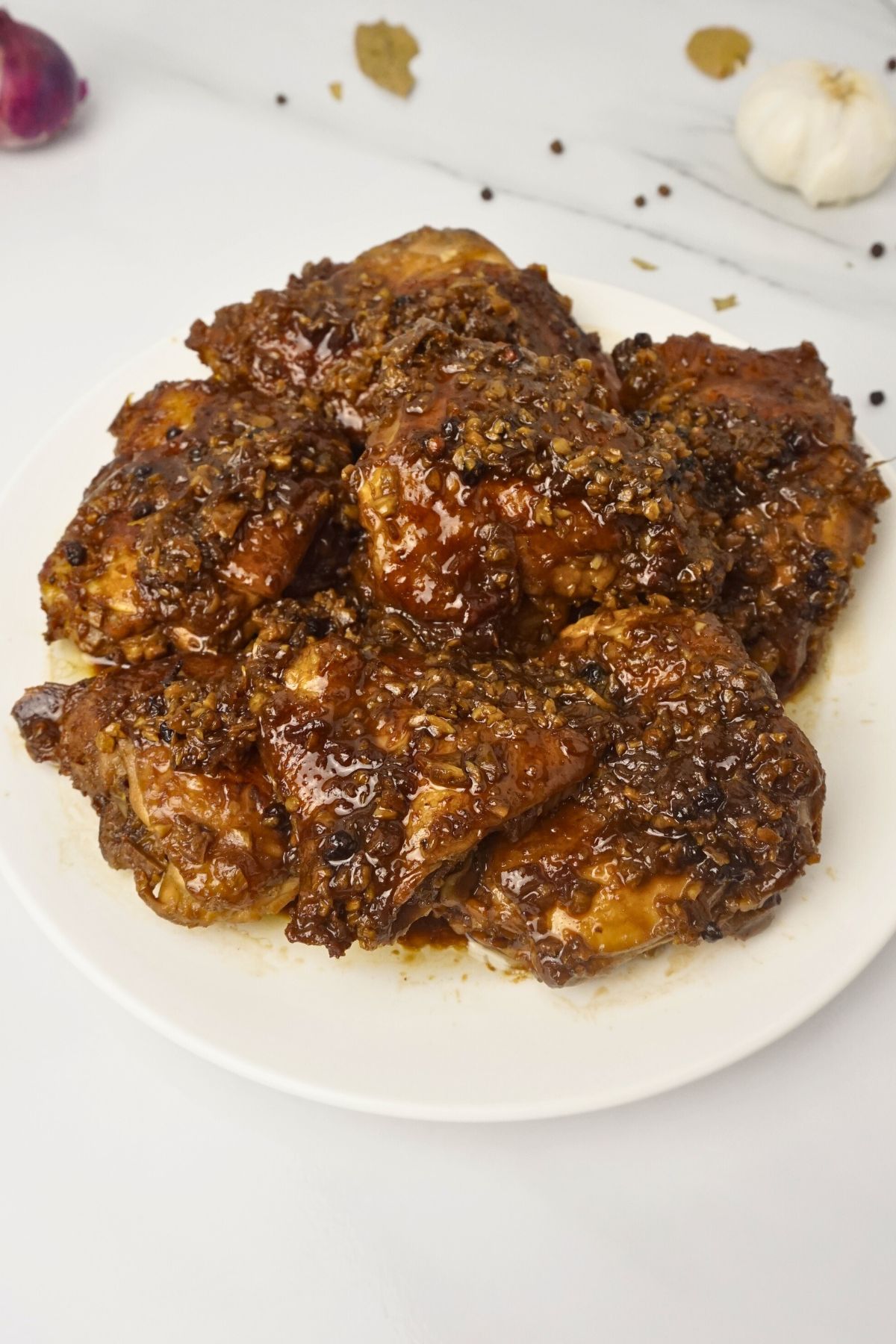
Do You Have To Marinate and Sear the Chicken?
Marinating the Chicken
Honestly, marinating the chicken is a step I highly recommend. It allows the soy sauce, vinegar, and garlic to deeply penetrate the meat, making every bite flavorful and tender. If you’re pressed for time, you can marinate for a shorter period, but if you can, aim for at least 30 minutes to an hour. Trust me, the extra time is worth it for that rich taste.
Searing the Chicken
Searing the chicken before simmering it in the sauce adds another layer of flavor and texture. When you sear the chicken, it caramelizes the surface, giving it a delicious browned appearance and a richer taste. Plus, it helps render some of the fat, which enhances the final dish.
Can You Skip These Steps?
Sure, you can skip marinating and searing if you’re in a hurry, but the adobo might not be as flavorful or have the same depth. Without marinating, the flavors won’t be as pronounced, and without searing, you’ll miss out on that added richness and texture.
If you do skip these steps, you can still make a decent adobo by simmering the chicken directly in the sauce mixture. However, for the best possible flavor, it’s worth taking the extra time to marinate and sear the chicken. Believe me, those few extra steps make a big difference!
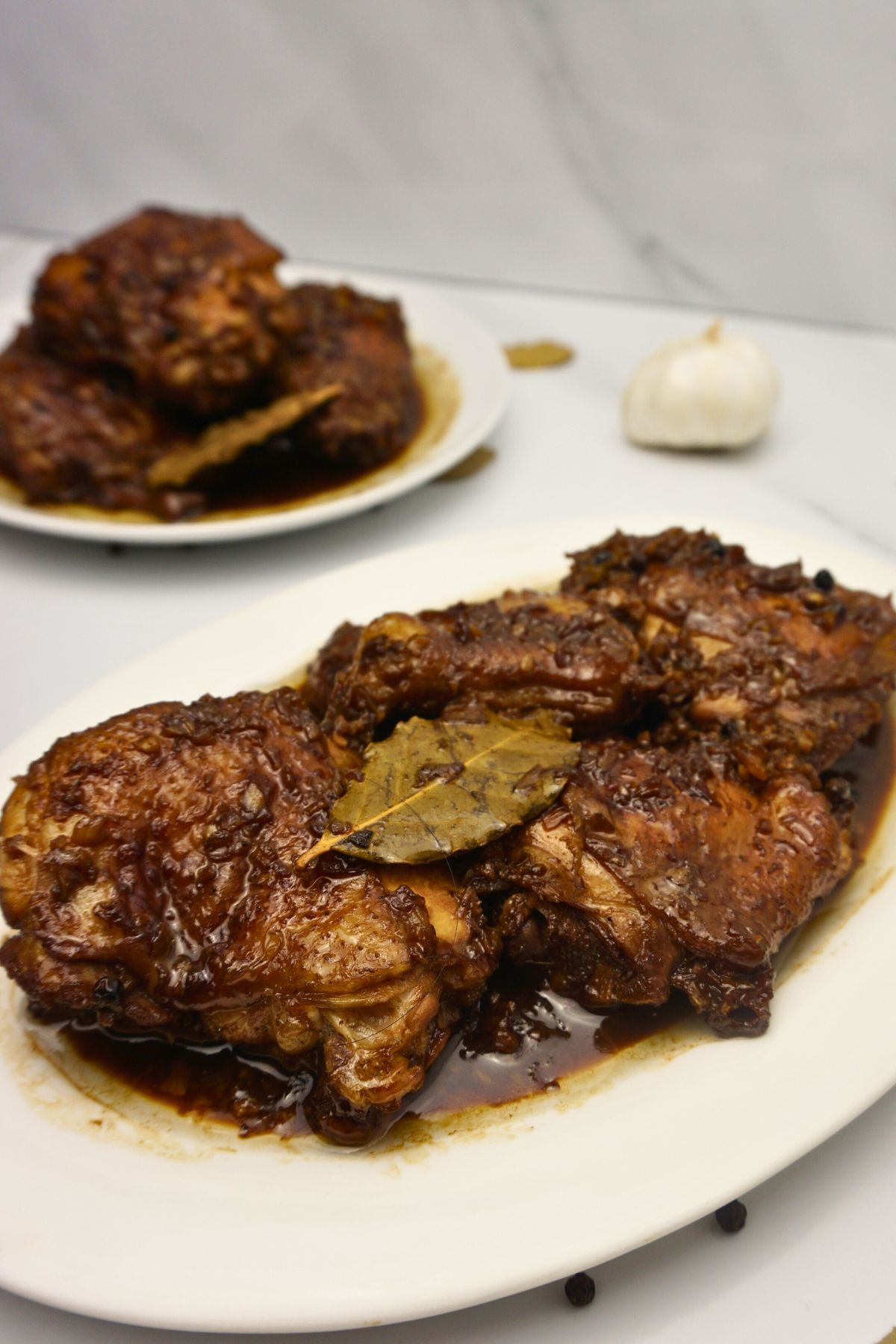
Chicken Adobo Cooking Tips and Tricks
Use Low and Slow Heat
Cook the adobo over low heat once it starts simmering. This slow cooking process ensures that the chicken becomes tender and absorbs all the flavors of the sauce.
Adjust Seasoning Carefully
Taste the adobo as it simmers and adjust the seasoning accordingly. Add more soy sauce for saltiness, vinegar for tanginess, or sugar for sweetness, depending on your preference.
Thicken the Sauce
If the sauce is too thin, let it simmer uncovered for a bit longer to reduce and thicken. This will concentrate the flavors and give your adobo a richer consistency.
Make It Ahead
Adobo tastes even better the next day as the flavors have had time to meld together. Consider making a big batch and letting it sit in the fridge overnight for an even more flavorful dish.
Get Creative
Don’t be afraid to experiment with additional ingredients like potatoes, hard-boiled eggs, or pineapple chunks to add variety to your adobo. Just adjust the cooking time accordingly to ensure everything is cooked to perfection.
Serve with Steamed Rice
Adobo is traditionally served with steamed rice to soak up all the delicious sauce. Make sure to have plenty on hand to enjoy every last drop!
Frequently Asked Questions
Chicken adobo can be stored in the fridge for up to 3-4 days. It often tastes even better the next day!
Yes, you can add sliced chili peppers or a bit of chili paste to the sauce for a spicy kick.
Use low-sodium soy sauce and taste the sauce before adding any extra salt. You can also balance the saltiness with a bit of sugar.
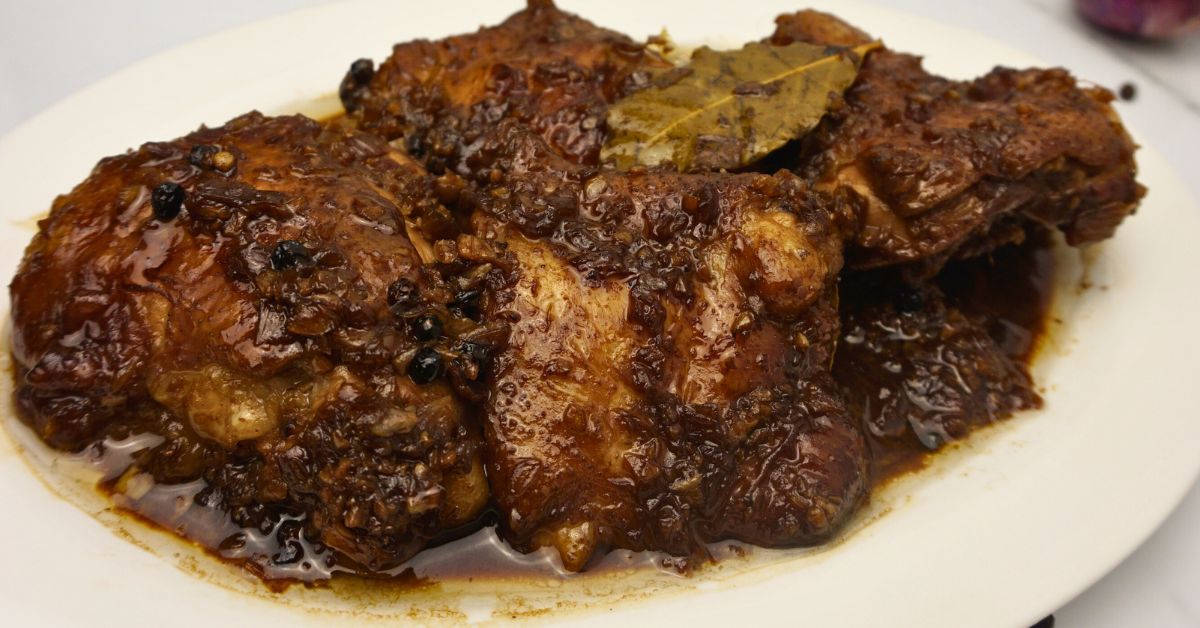
Chicken Adobo
Ingredients
- 1 kilogram Chicken Thigh
- 8 tbsp Soy Sauce
- 8 tbsp Vinegar
- 8 cloves Garlic (minced)
- 1 piece Onion large (diced)
- 1 cup Water
- 5 piece Bay Leaves / Laurel
- 1 tsp Black Pepper (whole)
- 1 tbsp Brown Sugar
- Salt to taste
Instructions
- In a mixing bowl marinade the chicken thighs with eight tablespoons of soy sauce, eight tablespoons of vinegar and a tablespoon of minced garlic. Set aside for thirty minutes.
- In a pan sear the chicken thighs until fat renders and lightly cooked, set aside.
- In the same pan saute, minced garlic and diced onion.
- Add the seared chicken thighs and let it simmer then add the rest of the marinated mixture.
- Add a cup of water, five pieces of bay leaves and a teaspoon of whole black pepper. Cover and bring to a boil.
- Adjust with salt according to taste and let it simmer until the chicken is well cooked.
- Add a tablespoon of sugar and let it simmer until the sauce thickens.
- Transfer to a plate and serve!
Video
Notes
- You can add potatoes to your adobo. Just cut them in half.
- You can also add hard boiled eggs.
